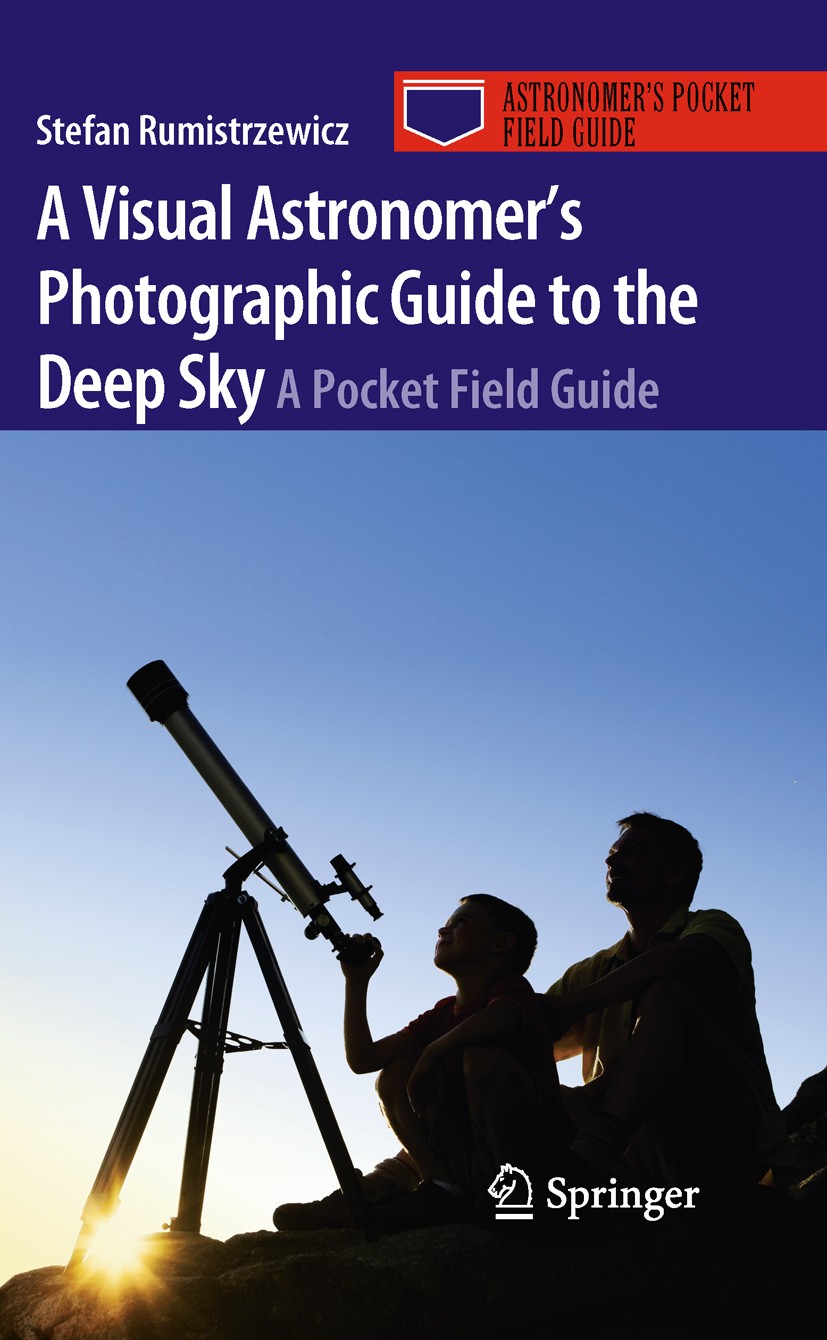| 期刊全称 | A Visual Astronomer‘s Photographic Guide to the Deep Sky | | 期刊简称 | A Pocket Field Guide | | 影响因子2023 | Stefan Rumistrzewicz | | 视频video | http://file.papertrans.cn/143/142577/142577.mp4 | | 发行地址 | Illustrates exactly what deep sky objects will actually look like when observed, not as they look with enhanced imaging and processing.Provides various techniques to help develop the reader‘s observin | | 学科分类 | Astronomer‘s Pocket Field Guide | | 图书封面 |  | | 影响因子 | Over the last 15 years or so there has been a huge increase in the popularity of astrophotography with the advent of digital SLR cameras and CCD imagers. These have enabled astronomers to take many images and, indeed, check images as they scan the skies. Processing techniques using computer software have also made ‘developing’ these images more accessible to those of us who are ‘chemically challenged!’ And let’s face it – some of the pictures you see these days in magazines, books, and on popular web forums are, frankly, amazing! So, why bother looking through the eyepiece you ask? Well, for one thing, setting up the equipment is quicker. You just take your ‘scope out of the garage or, if you’re lucky enough to own one, open the roof of your observatory, align the ‘scope and off you go. If you have an equatorial mount, you’ll still need to roughly polar align, but this really takes only a few moments. The ‘imager’ would most likely need to spend more time setting up. This would include very accurate polar alignment (for equatorial mounts), then finding a guide star using his or her finder, checking the software is functioning properly, and c- tinuous monitoring to make sure the ali | | Pindex | Book 2010 |
The information of publication is updating

|
|
 |Archiver|手机版|小黑屋|
派博传思国际
( 京公网安备110108008328)
GMT+8, 2025-11-13 17:53
|Archiver|手机版|小黑屋|
派博传思国际
( 京公网安备110108008328)
GMT+8, 2025-11-13 17:53


